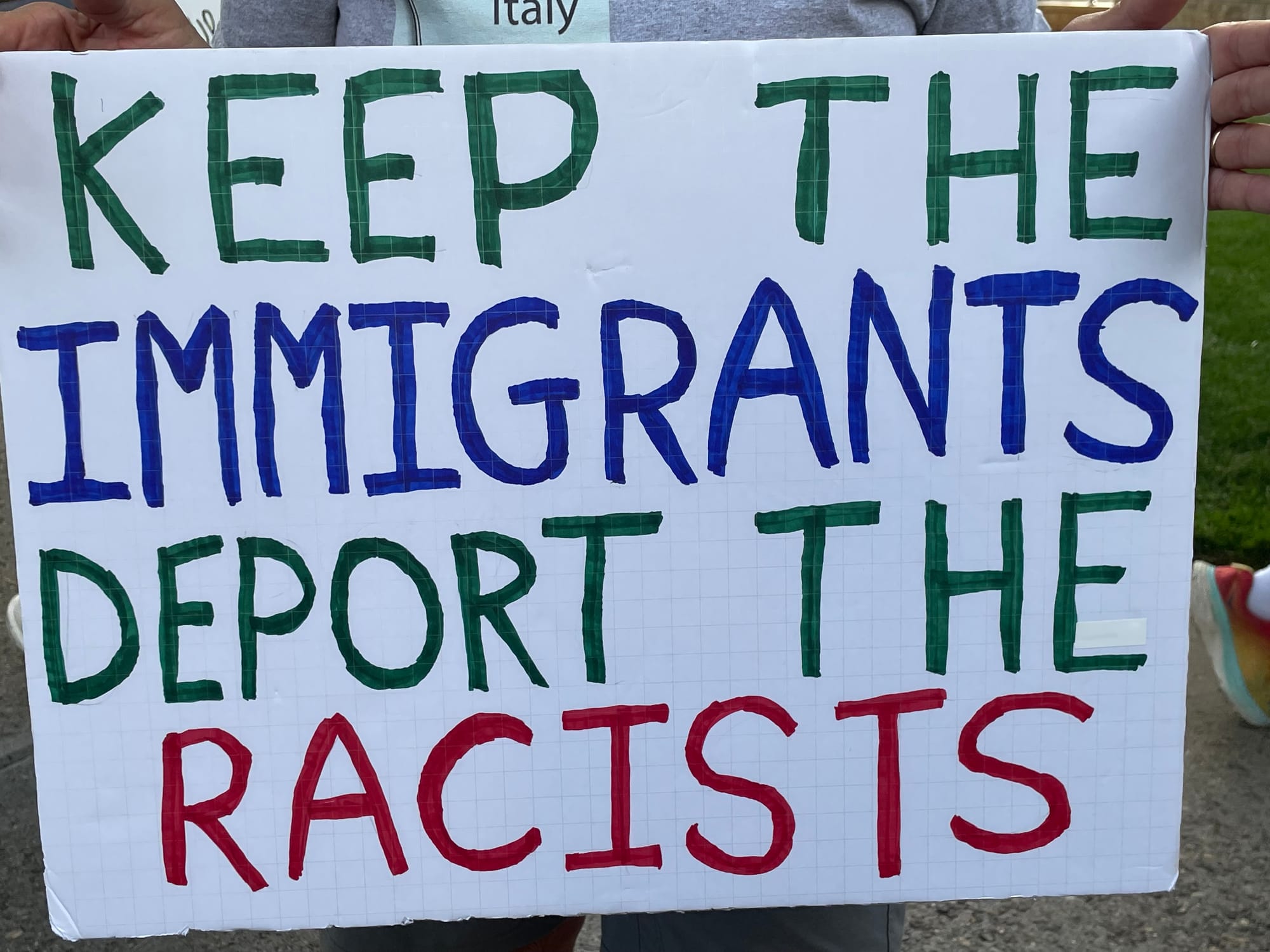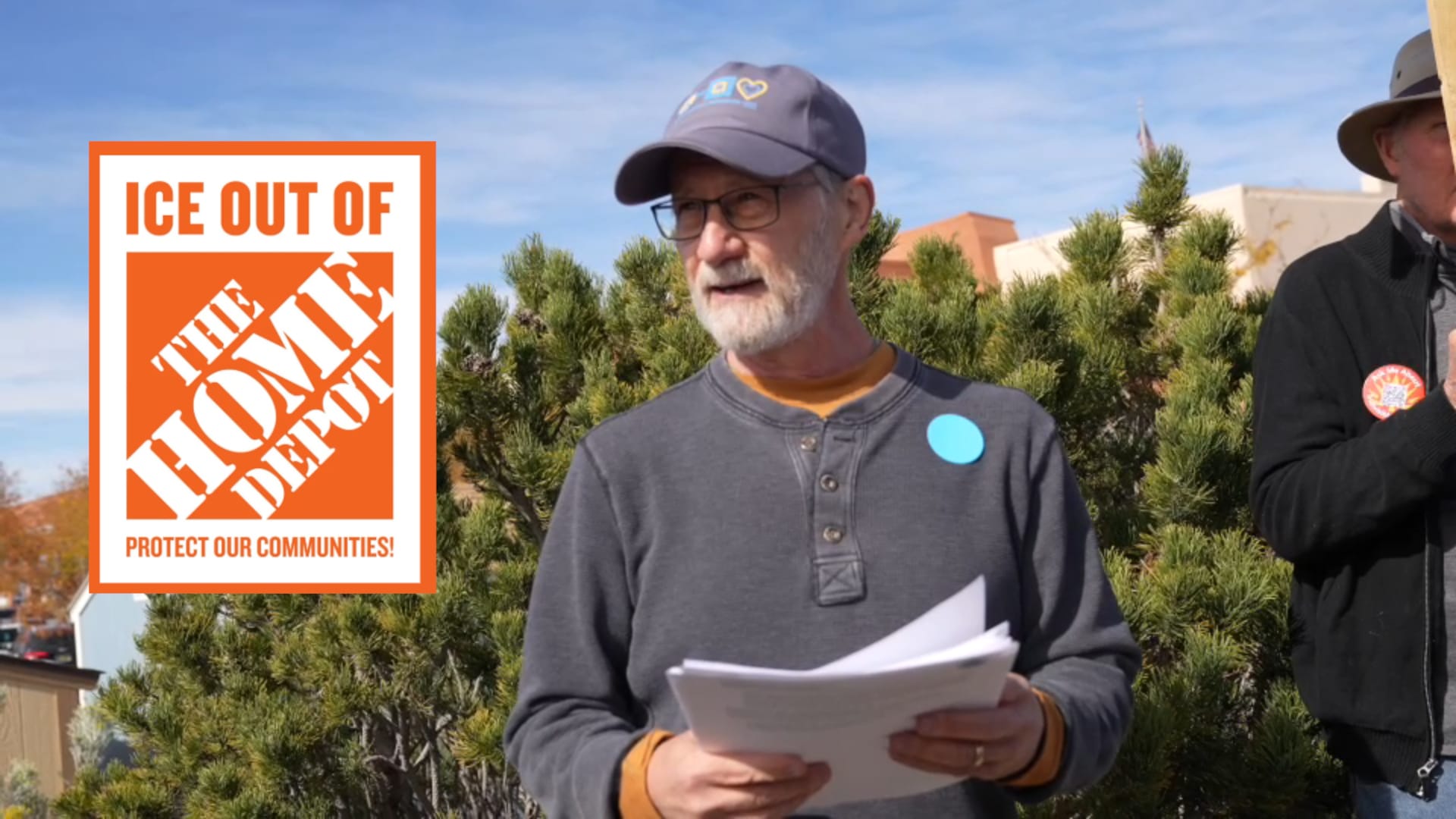There’s been a lot of buzz lately about the 3.5% “rule”—the idea that if 3.5% of the population gets active, it is possible to topple an authoritarian regime. That “rule,” popularized by Erica Chenoweth and Maria Stephan, is based on their extensive research on successful movements. When 3.5% of the population got involved in protesting the government, the regime, with almost no exceptions, was toppled. The same research shows that non-violent movements are far more effective than violent ones, in part because it is much easier to recruit people when the movement is nonviolent.
But what does the 3.5% “rule” really mean, and what does it tell us about our situation here in the U.S.?
It is important to note that the “rule” is more descriptive than prescriptive. The countries that succeeded in toppling their leader did not seek to involve 3.5% of the population, adeptly calculating the number of people needing to be mobilized and then stopping when they reached that number. The “rule” simply indicates that, in the past, it has taken a relatively small percentage of the population to be actively involved in order to bring about regime change.
But what does that involvement mean? It is not limited to joining in protests, though protests are important (https://indivisiblesantafe.org/are-protests-worthwhile/). For one thing, it is no easy matter to get that many people—in the U.S., the equivalent of roughly 11.6 million people—involved in vocally and visibly fighting the regime. It requires a lot of outreach: knocking on doors, talking to people, holding meetings, forming groups, organizing activities, arguing about tactics, splintering into new groups, and so on.
Those millions of people are going to seek different ways of being involved. Some, like myself, will enjoy showing up at protests and shouting out chants and demands. Others prefer to call elected officials, write postcards, organize boycotts, support local organizations, make donations, write to the newspaper, recruit their friends, register voters, talk to voters, or throw submarine sandwiches at ICE officers.
Movements have a relatively small number of leaders and preferably a large number of followers. Different leaders will gravitate to different strategies, just as followers will choose different leaders. The greater the diversity of people and methods involved, the likelier the success. It is impossible to know beforehand just what strategy will prove the most effective. Massive protests? Boycotts? Sit-ins? Strikes? In my decades of experience in advocacy, a combination of measures was usually the most effective, and it was not generally clear to us in advance, or even in retrospect, which approach was the most effective.
All right. So we need a lot of people engaged in a lot of different actions. But we surely don’t expect tRump to step down. Even if he did, pleading swollen ankle syndrome or renewed bone spurs, wouldn’t the equally atrocious J.D. Vance just take over in his place? After all, tRump would have no power if not supported by his thousands of eager minions. What then is the goal of our movement?
I will write separately about our bigger goal—just getting rid of our atrocious president, or something bigger and broader. (OK, you’ve probably already guessed where I stand, but I promise that the details will be interesting.) But what do we refer to when we talk about bringing about regime change in the U.S.?
We can’t topple the current government, but we can—oops, I almost said emasculate—er, weaken the current regime so that it can no longer continue to wreak havoc on our federal, state, and local governments, to unleash the horror of ICE, to dismantle our healthcare research and services, our educational system, our Constitutional rights, and (fill in the blank of the issues most horrifying you at present).
Success means public opinion shifting, not just as we can see in polls but in conversations across the political spectrum, in ever-growing vocal opposition to the regime, and in actions of noncompliance and nonviolent resistance. Then, less and less courage is needed to resist and more and more shame is associated with bending the knee. When the resistance is widespread and increasingly visible, we should see other changes as well.
Success also means more people, including younger ones, running for office. According to Run for Something, there has already been a surge in new candidates. Don’t like the Democratic Party? Run for office and help make the party more dynamic and responsive!
Success would also mean Democrats outmaneuvering Republicans and taking back the House in 2026, and then launching investigations into the illegality of the current regime. It means elected officials, civil servants, and others working together to resist the destruction of our federal government and our democracy. It means big corporations, law firms, universities, and the media resisting rather than caving. It means politicians across the political spectrum acting on their oaths rather than out of fear of our increasingly unpopular president. It means the pillars that support the regime crumbling as workers, businesspeople, civil servants, soldiers, members of the National Guard, even ICE agents refuse to follow orders.
Yes, it’s a tall order, and no, there are no guarantees. But what history has shown us is that it only requires a small percentage of the population actively resisting in order to bring about change. History offers hope, and we’re going to need hope to sustain the long hard battle ahead of us to restore and repair our democracy, our institutions, and our faith in a functional government.













